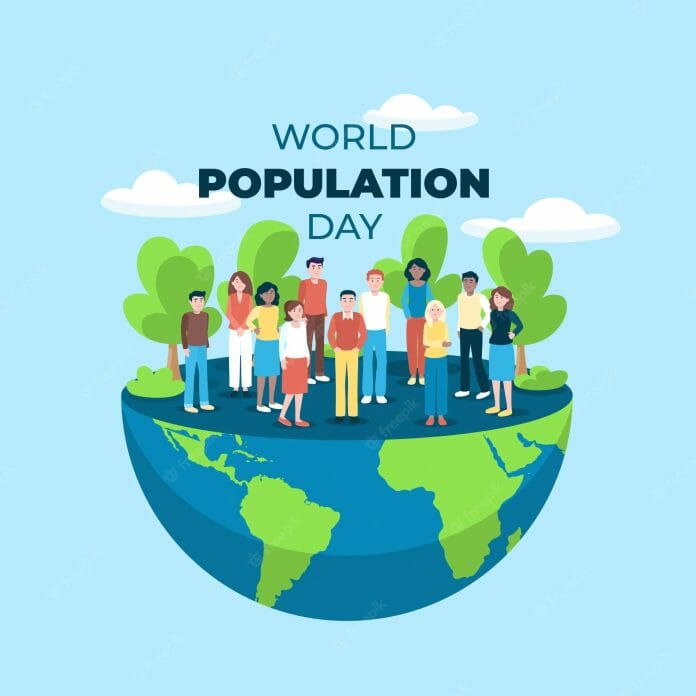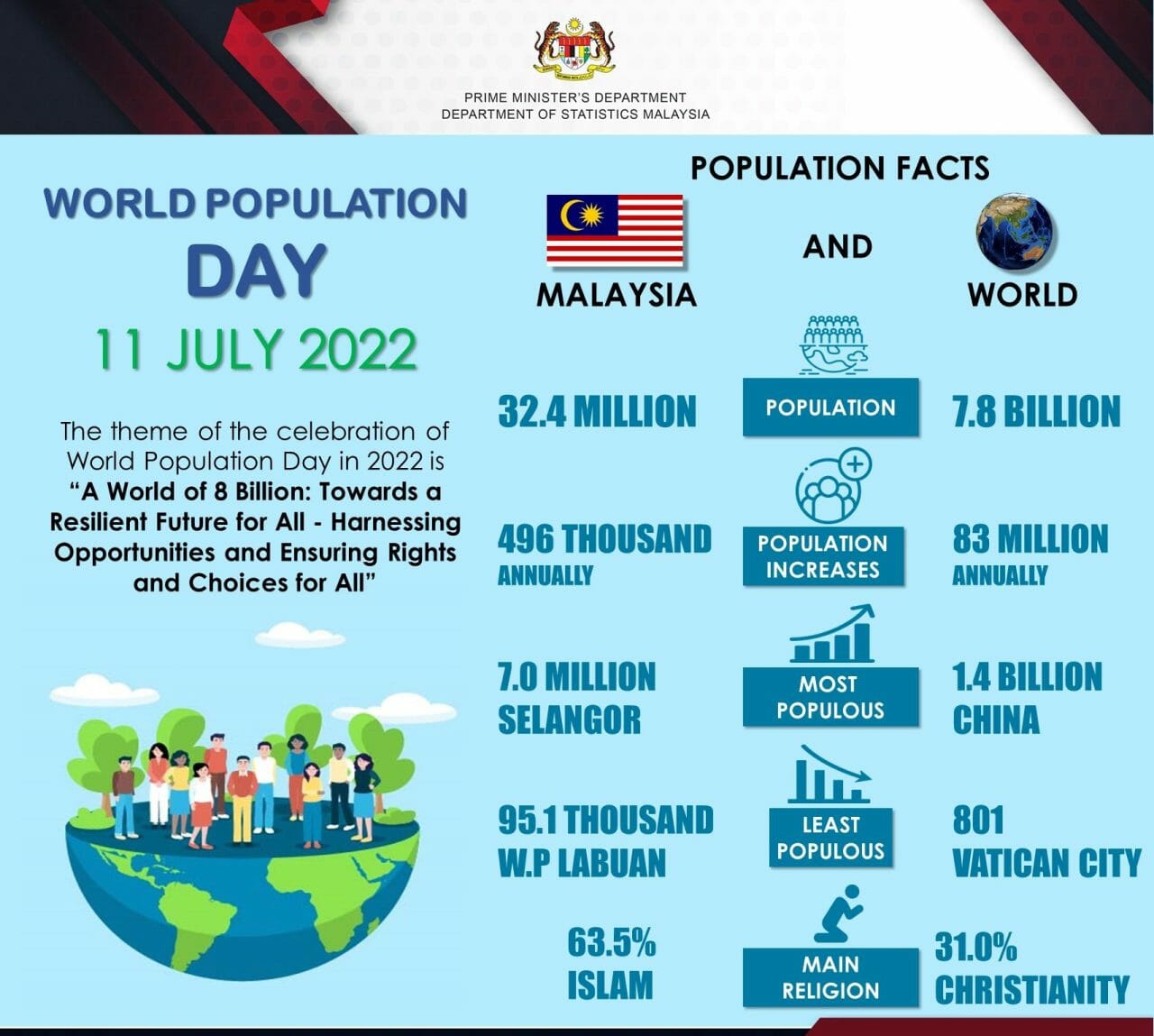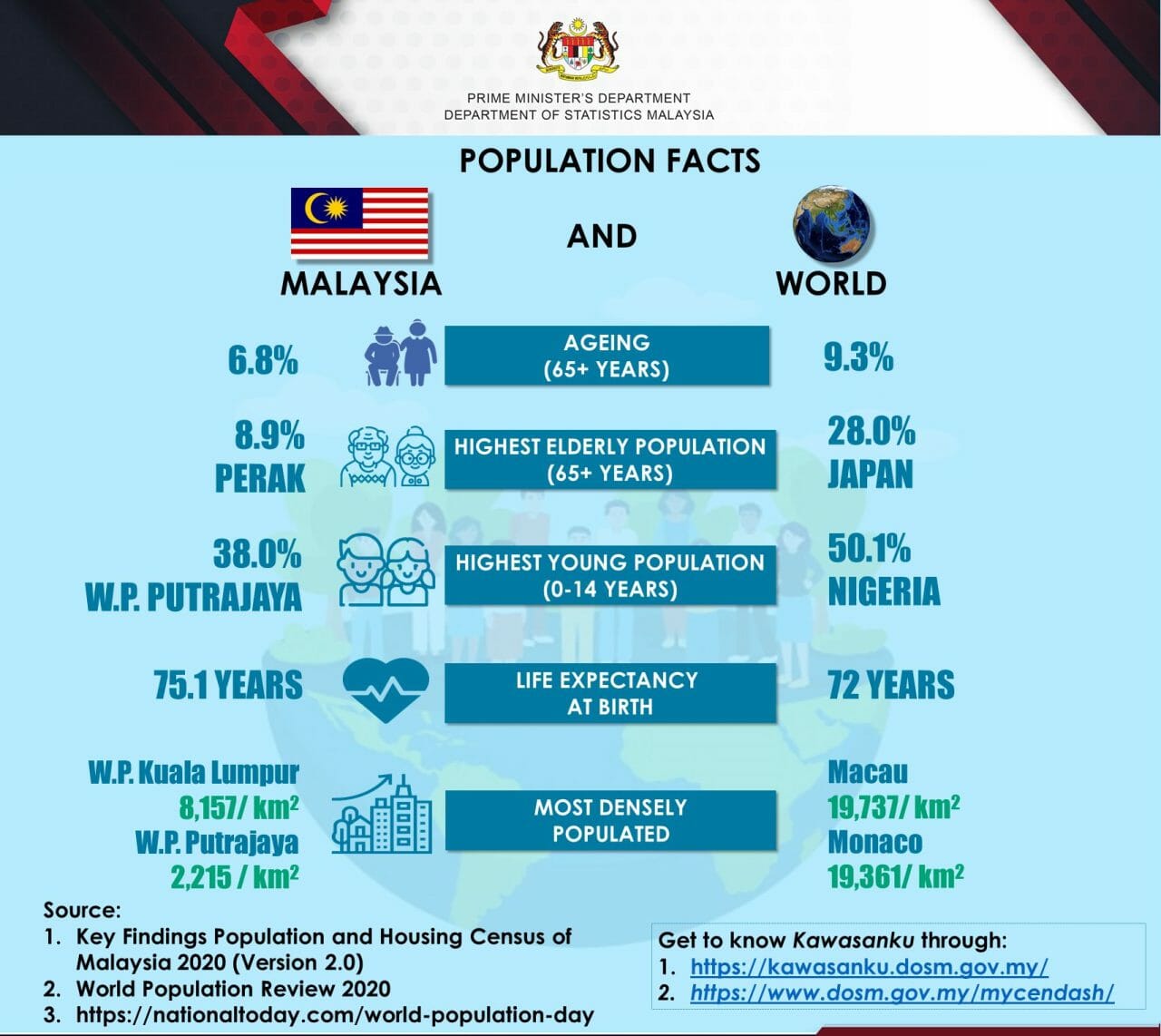If you didn’t already know, July 11 marks World Population Day, this year the theme is “8 Billion; Towards the resilient future for all- Harnessing opportunities and ensuring Rights and Choices for All which is aptly put as the globe inches towards the figure at 7.8 billion.
Established by the United Nations to bring awareness to population growth the records showed that in 2011, the world reached a population of 7 billion, and this year, the number is expected to hit 8 billion. Some will marvel at the advancements in health that have extended lifespans, reduced maternal mortality, and child mortality, and given rise to vaccine development in record time. Others will tout technological innovations that have eased our lives and connected us more than ever.
In Malaysia, the growth in population is healthy and robust, the country is now nearing 32.4 million adding close to 500k annually. Selangor continues to hold the title as the most populous state in the country with 7 million residents while Wilayah Persekutuan seems to be the densest with 8157 people per kilometre sq.
As for global population growth, China retains the position as the most populous with 1.4 billion while the world adds an average of 83 million babies onto her planet every year.
Perak as seen on the Department of Statistics chart indicates to be having the most elderly population likely to be a major attraction for retirement due to its serene landscape and lush vegetation. Globally Japan holds the honour of having the most elderly population which has become a boon and bane for the Eastern nation.
To give perspective on population growth from the early days to modern times, if we look back it took hundreds of thousands of years for the world population to grow to 1 billion – then in just another 200 years or so, it grew sevenfold. In 2011, the global population reached the 7 billion mark, it stands at almost 7.9 billion in 2021, and it’s expected to grow to around 8.5 billion in 2030, 9.7 billion in 2050, and 10.9 billion in 2100.
This dramatic growth has been driven largely by increasing numbers of people surviving to reproductive age and has been accompanied by major changes in fertility rates, increasing urbanization, and accelerating migration. The United Nations reckons these trends will have far-reaching implications for generations to come.
Did you know?
The life span of adults in the developed world has increased since the middle of the 20th century – the number of people reaching the age of 100 years has never been greater than it is today.











